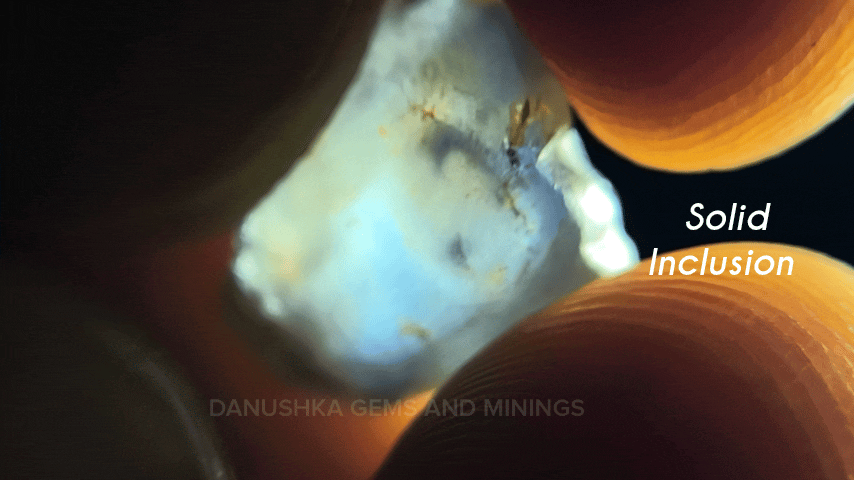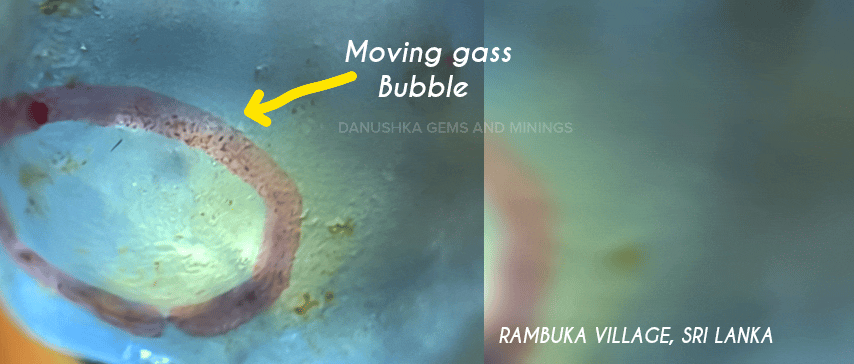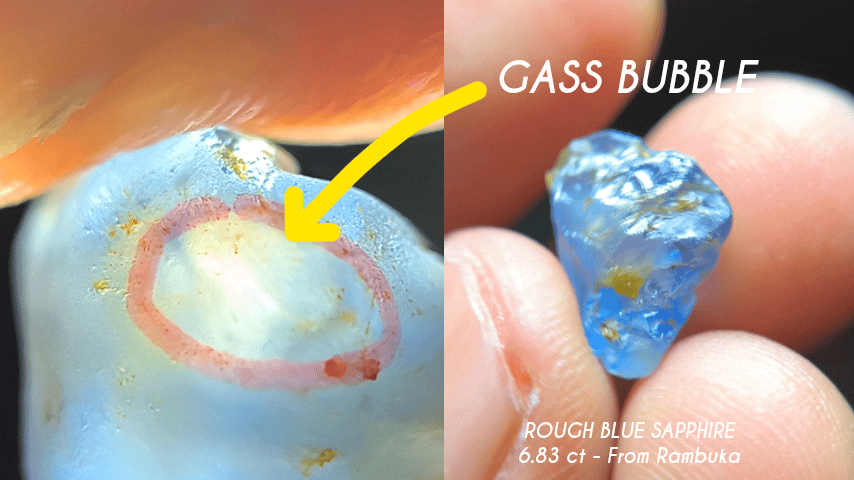Among the many wonders of Sri Lankan gemstones, few discoveries are as fascinating and rare as the sapphire with a three-phase fluid inclusion. This 6.83 ct unheated natural blue sapphire rough, sourced from Rambuka village around mining in Sri Lanka, showcases a geological marvel hidden within its crystalline body — a cavity holding liquid, moving gas bubbles, and solid inclusions together.
What is a Three-Phase Fluid Inclusion?

In gemology, inclusions are natural features formed during the growth of a crystal. They provide vital clues about the gem’s origin and authenticity. A three-phase fluid inclusion is one of the rarest types, consisting of three distinct elements in the same cavity:
1. Liquid – solution trapped during formation.
2. Gas bubbles – visible under magnification, but in this case, even moving clearly to the naked eye.
3. Solid crystals – often tiny mineral inclusions suspended in the cavity.
This unique combination transforms the sapphire into not just a gemstone but also a natural time capsule, preserving a microenvironment from millions of years ago.
Why Rambuka is Special

Sri Lanka, known as the “Island of Gems,” has countless mining locations, but Rambuka stands apart for producing intensely colored blue sapphires. Over the years, a handful of sapphires with three-phase fluid inclusions have been unearthed here, making the location even more significant for collectors. Unlike other mining areas in Sri Lanka, Rambuka’s geology seems particularly suited to forming these rare internal structures.
From Local Markets to Global Awareness
Traditionally, Sri Lankan traders referred to such stones as “water bubble sapphires.” For decades, their uniqueness was not widely recognized in the international gem market. However, in recent years, as knowledge spread — often compared to the better-known enhydro quartz — collectors and gemologists alike have begun to appreciate their true rarity and scientific value.
The Collector’s Appeal

This 6.83 ct sapphire measures 11.7 x 10.3 x 6.5 mm, with its rare inclusion cavity at about 3.5 x 2.7 mm. Inside, the gas bubbles move visibly with the naked eye, an extraordinary feature that makes the stone both an aesthetic marvel and a scientific curiosity. For gem collectors, such stones are almost priceless — not for their cutting potential, but for their rarity and uniqueness as natural specimens.
Owning a sapphire with a three-phase fluid inclusion is like holding a piece of the earth’s geological diary. It is an object of study, beauty, and rarity all in one. Unlike regular sapphires valued mainly for color and clarity, this gem’s value lies in its story, uniqueness, and scientific importance.
Conclusion
The discovery of a sapphire with a three-phase fluid inclusion from Rambuka reminds us why Sri Lanka continues to fascinate the gem world. More than just a source of beautiful faceted stones, it is a land that occasionally reveals nature’s rarest secrets.
For collectors, owning such a piece means more than acquiring a gem — it means preserving a chapter of the earth’s history. With moving bubbles, solid inclusions, and liquid all trapped inside a timeless blue body, this sapphire is a true geological miracle.
✨ Danushka Gems & Minings — bringing rare earth treasures directly from Sri Lanka’s heart to your hands.
